Battery freezing. How to use a car battery in winter at low temperatures. Frozen battery: what to do?
The situation when the electrolyte freezes in the battery is not new in winter, this is quite a common phenomenon.
In this article, we will consider why this happens, how to reanimate the battery and subsequently not bring the latter to such a state.
The first signs of our problem
With the onset of the winter period, the trouble for car owners increases significantly. In addition to the difficult traffic situation, the need for more frequent monitoring of the condition of systems and car components is added.
Sulfation is most commonly caused by a battery system not having the proper state of charge for an extended period of time. Avoiding over-discharging a battery for long periods of time almost always results in permanent damage to the batteries, eventually leading to costly battery replacements. Although the battery in the battery has no load, it will automatically discharge as a result of local actions in the battery. Storing batteries at lower temperatures reduces the amount of local battery activity, but this does not mean that batteries can be ignored for extended periods time.
Particular attention should be paid to the battery, because in winter the load on it increases.
Besides, very coldy can lead to another unpleasant factor - freezing of the electrolyte inside the battery.
The first sign of such a nuisance is the lack of power in the vehicle's on-board network. That is, the driver turns the ignition key, and the car does not react at all.
When it comes time to store the equipment, make sure the batteries are fully charged and the electrolyte is at the correct level. It is also very important to maintain proper electrolyte levels during the storage period. We advise you to contact your dealer or battery manufacturer and follow their recommendations first.
If the electrolyte in the battery froze, the cell banks collapsed, the active mass spilled out of the plate grids, the plates warped or the ice broke through the separators, the battery cannot be restored
In early spring, we receive many calls regarding charging problems that are the result of improper maintenance of batteries that have been placed in storage. A large number of calls from private owners of golf cars who leave their summer homes during the winter months. Although not as common, these calls are also received in the fall from those returning to their winter homes. Private golf car owners are often unaware of the maintenance requirements for stocked batteries.
Of course, the reason for this may be poor contact at the terminals due to their strong oxidation.
But if everything is in order with the terminals, you should take a closer look at the battery itself - the swollen sides of the battery case are an accurate signal that ice has formed inside it.
This feature is manifested because the water that is part of the electrolyte expands when it freezes and presses on the walls.
So why does the battery freeze?
What these owners also don't realize is that many car and golf car dealers offer services to maintain these battery systems at minimal cost. If you are a private owner, please contact your local battery and hardware dealers for availability of this service.
Large fleets of battery powered equipment such as golf courses and construction companies will assign personnel to perform the maintenance tasks necessary to protect their large investments. Regardless of the amount of equipment placed in the warehouse, it is very important that the storage location does not allow the batteries to freeze. Once the batteries have been frozen, they will most likely need to be replaced.
Such situations also happen.
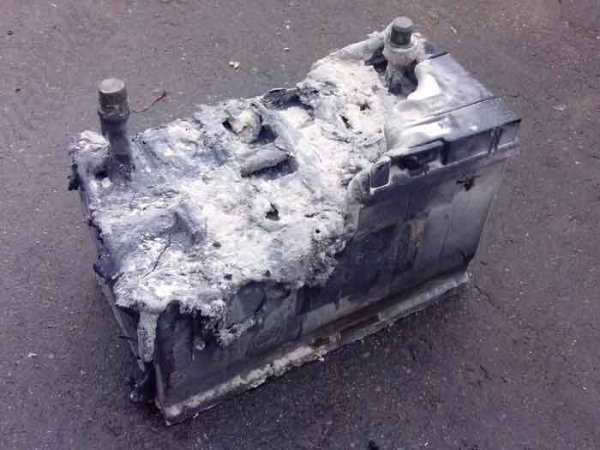
Causes of ice formation
The reason for the formation of ice in the battery lies in the density of the electrolyte. The lower the density, the higher the freezing temperature threshold.
The decrease in density is accompanied by an increase in the percentage of water in the solution, and it is she who freezes.
When the storage period ends and it is time to return the equipment to service, it is common practice to "wake up" the batteries. No, you don't put an alarm clock next to batteries or bad cold water on them. To "wake up" batteries usually refers to the practice of allowing the charger to complete four to five successive charge cycles before putting the equipment back into service. This practice will help improve battery efficiency and ultimately good hardware performance.
With a normal electrolyte density, which should be 1.27 g / cm3, ice formation will begin only at temperatures below -65 degrees.
Density drop to 1.20 g/cm3 leads to the fact that ice will already appear at -27 degrees, and a decrease below 1.10 g / cm3 will ensure the crystallization of water inside the battery already at minus 7 degrees.
Actual battery life
As mentioned, never let the battery freeze. A battery that has been frozen will rarely produce any useful output. Maintenance to avoid freezing of batteries not only applies to those placed in storage, but also applies to equipment stored outside, such as those located in rented areas.
What to do to avoid freezing
The best protection against battery freezing is to fully charge the batteries. A fully charged battery has a much lower freezing point than one in a state of discharge. Water has a freezing point of 32 degrees Fahrenheit, which corresponds to specific gravity. The average specific gravity of the electrolyte found in golf car batteries is about the same. The higher the specific gravity of the electrolyte, the lower the freezing point. Examples: An electrolyte with a specific gravity of about 250 has a freezing point of -62 degrees Fahrenheit, and a specific gravity of about 100 has a freezing point of 19 degrees Fahrenheit.
Standard indicators of electrolyte density are shown in the table below.
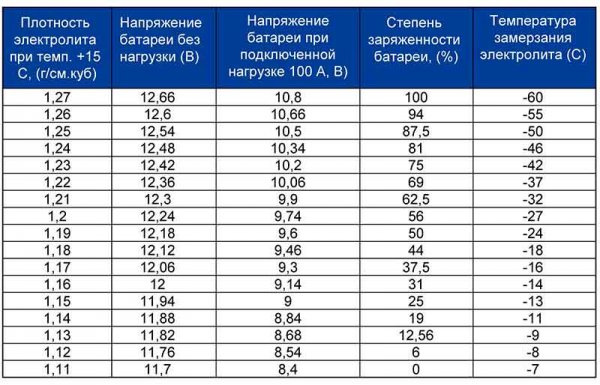
Therefore, it is important to carry out battery maintenance before the winter season, which consists in checking the density and fully recharging.
Battery discharge can also lead to water crystallization at low temperatures.
If extreme cold temperatures are expected, move the batteries to a warmer environment to avoid costly battery replacements. Cold temperatures also affect battery capacity. Typically, battery capacity is measured at 77 degrees Fahrenheit. Battery capacity decreases when batteries are used at lower temperatures. This is a result of the slower rate at which the acid in the electrolyte combines with the plate material. It is common practice for batteries to be charged at cooler temperatures prior to use.
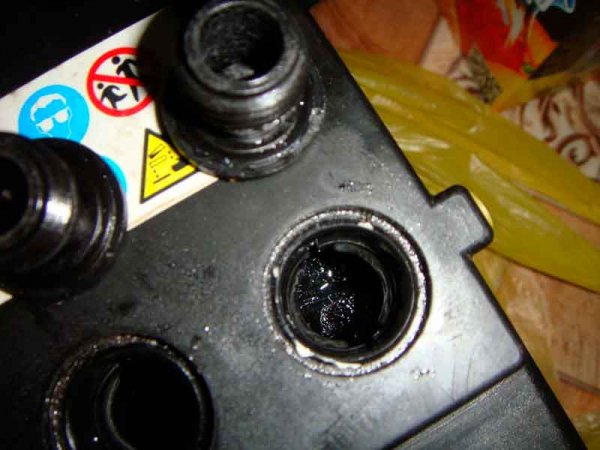
In winter, the load on the on-board network is much higher - the lights are on, interior and seat heating, etc.
An increase in battery power consumption is also due to the difficult start-up of a cold engine.
To fully restore the battery charge, a significantly longer generator run time is required.
Proper care of deep cycle batteries
This will help ensure maximum battery performance at lower temperatures. environment. While we're on the subject of batteries, let's look at some basic battery maintenance principles that will help improve the performance and life of your battery, charger, and hardware.
Always wear safety goggles and clothing when working with batteries. Batteries contain acids that can cause bodily harm. Never place wrenches or other metal objects on top of batteries or near battery terminals. Doing so may cause the battery to burst or explode.
Short trips in winter lead to the fact that the battery does not have time to fully restore its charge. A decrease in charge leads to a decrease in density, and as a result, an increase in the temperature threshold of water crystallization.
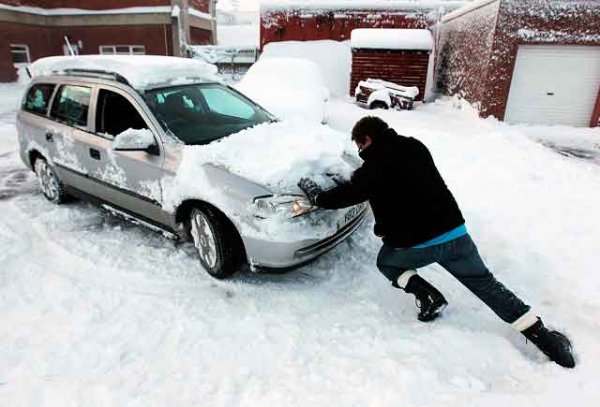
This problem with the battery, of course, is unpleasant, but this does not mean that you will have to change it to a new one.
Keep in mind that new batteries require several cycles, usually around 20, before being manufactured. full power. It is recommended that new batteries not be discharged below 50% for the first five charge cycles. New batteries and old batteries that have been in storage are not able to produce their rated power until they are discharged and recharged several times. Over-discharging new batteries, over 60%, can cause individual cells to lose polarity, resulting in complete battery failure shortly thereafter. When temperatures drop below 65 degrees Fahrenheit, batteries should be charged immediately after use. Cold batteries take longer to charge. Keep the top of the batteries and battery terminals clean and dry. This will prevent excessive self-discharge and current flow between the battery posts and the frame. Never let the battery freeze. This can permanently damage the batteries. Batteries placed in storage without storage will also self-discharge and sulfate in varying degrees, depending on the depth of discharge and the length of time remaining in the discharged state. Minimal sulfation can usually be recovered by recharging, although permanent loss of battery capacity and life can be expected. Maintain the electrolyte level in the batteries. If the electrolyte level drops below the top of the plates, it can reduce battery capacity and life. Pasty material on the battery plates that can dry out will permanently lose any ability to produce an electrical charge. Water should only be added to the battery when the battery is nearly or fully charged. If the electrolyte level is below the top of the plates before starting the charge cycle, add water so that the electrolyte level is reached even from the top of the plates. Drain the electrolyte level after a full charge. Electrolyte levels drop during discharge and rise during charge. Adding water to a battery in a discharged state will cause the electrolyte to overflow from the batteries when charging. It is recommended to use only distilled water to turn off the batteries. Older batteries approaching the end of their life usually require more frequent watering. Follow all operating instructions, cautions, and warnings on the charger, batteries, and equipment.
- Always charge new batteries before putting them into service.
- Limit the use of new batteries for the first 20 cycles.
There is always a possibility, however it depends on the degree of freezing, and what consequences the ice has led to.
If significant cracks are visible on the batteries, stretching along the entire case, then the battery will not be able to be “saved”. But if none were found during the initial examination, it is possible to “reanimate” the battery.
Cold winter temperature highly dependent on the car's battery. As the weather drops, so does the battery's ability to generate the power needed to turn the engine on. Cold weather can often lead to battery death. Then, to start the engine, you need to increase or charge the battery. However, at very low temperatures, the battery can actually freeze rather than just drain and die due to the cold. It is important to recognize the difference and learn how to deal with a virtually frozen battery.
Find out if the battery is really frozen or just dead. If the liquid inside the battery remains liquid, your battery will not freeze. Instead, you can charge or boost it. If it is frozen, you will need to thaw it before it can be used. Never attempt to lift a frozen battery as it may explode. Never attempt to lift a battery if the case has broken due to cold.
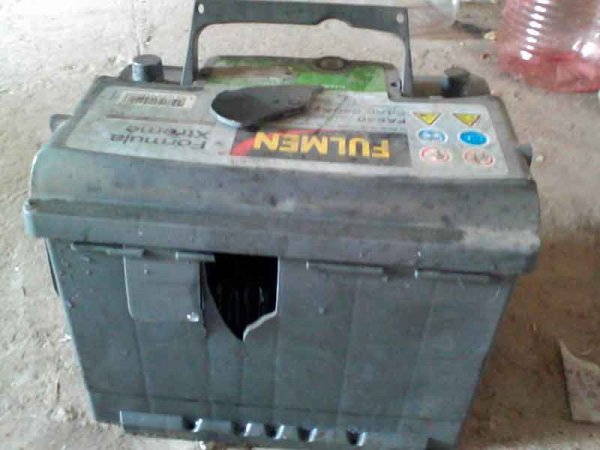
defrosting
The first thing to do is to defrost it. This must be done at room temperature. The use of heating devices to speed up the process is strictly prohibited.
Elevated temperatures can cause the housing to deform. For successful defrosting, it is desirable that the temperature difference be as small as possible.
Connect the vehicle if your vehicle is equipped with a block heater. Most vehicles in cold weather regions should be equipped with these. Connect the car for at least two to three hours and check the battery. If it hasn't started to thaw by then, the block heater will most likely be ineffective.
Remove the frozen battery from the vehicle. Remove the battery cover, disconnect the battery cables and carefully pull out the battery. Place the battery in a warm garage and allow the battery to thaw. If you need to use your car immediately and have a spare battery, you can install it and see if the car starts. Not all cold weather problems are limited to the battery. If the weather is cold enough to freeze the battery, your car still won't start.
It is good if this is done in a heated garage, where the temperature is not very high. The defrosting process may be somewhat delayed because of this, but it will be the most correct and safest.
At the same time, putting battery for heating, it is advisable to place it in some kind of container.
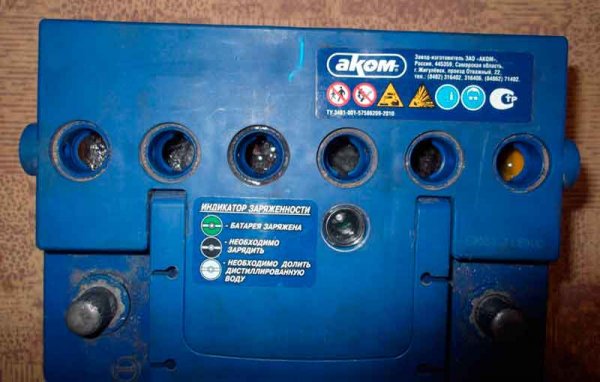
Touch the car in a heated area if you don't want to remove the battery. If you're parked in the driveway and have garage space available, press the car in the garage and turn on the heat until the battery melts. Test a frozen battery after thawing it and charge it. Most batteries that are frozen will need to be recharged. Inspect the battery and make sure it is not cracked or leaking before attempting to charge it. Also, make sure the battery is completely defrosted before connecting it to the charger.
It is possible that small cracks have formed in the case, and after defrosting, electrolyte will flow through them.
Also, you should not rush too much - it is better to spend more time on this process than to “kill” the battery by short circuiting the plates, which will provide the remaining ice inside.
After defrosting the battery, you should once again carefully inspect it.
It is much more difficult to restore the performance of a battery with a cracked case.
If there are small cracks, you can try to solder them, after draining the liquid and drying the case. With the right approach, it is possible to eliminate the leak, but not always.
You also need to inspect the inside of the battery. Ice may well destroy the internal partitions of cans. If such damage is noticed, the battery cannot be restored.
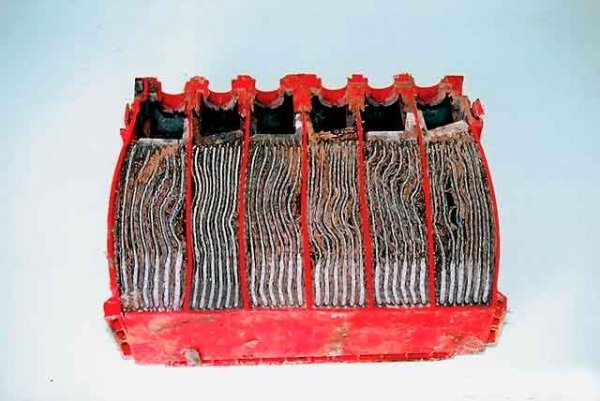
If a thorough inspection showed the complete integrity of the battery, then you can proceed to the next step - charging.
Charging features
Some advise charging with an automatic charger, which will regulate the amount of current supplied to the battery.
However, it is not. A defrosted battery should be charged with low currents. If during normal charging it is recommended to give a current equal to 10% of its capacity, then it is recommended to charge a battery that has been in ice with even less current, about 5% of its capacity.
That is, a battery with a capacity of 60 Ah must be charged with a current of 3 A. In this case, the charging time will be 12-14 hours.
So, when carrying out the charge recovery process, it is better to use a device that allows you to adjust the current.
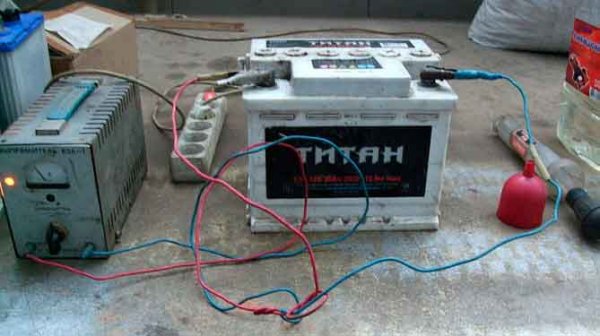
After recharging is completed, it will be necessary to evaluate the state of the electrolyte.
If, after all the work, the electrolyte remained clean and transparent, then the battery “did not suffer” during the formation of ice in it, and you can continue to check.
But if the electrolyte became cloudy and third-party particles are visible in it, the crystallization of water led to the destruction of the lead plates, they simply crumbled.
After making sure that the electrolyte is clean, its density should be checked. If this parameter does not correspond to the required one, it will be necessary to bring it to the norm, and then again carry out the recharging process.
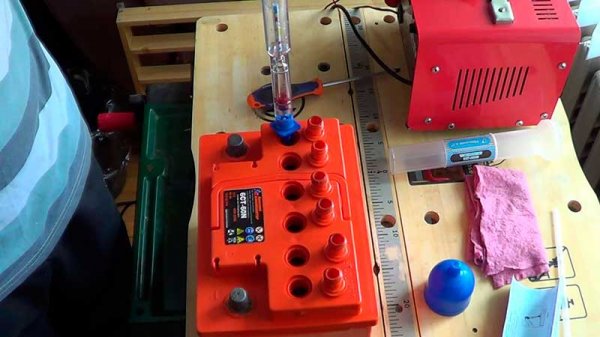
The last step in the test is to test the battery with a load plug.
If, during measurement, the plug showed a voltage at the terminals below 10 V, this is a signal that the plates have shed.
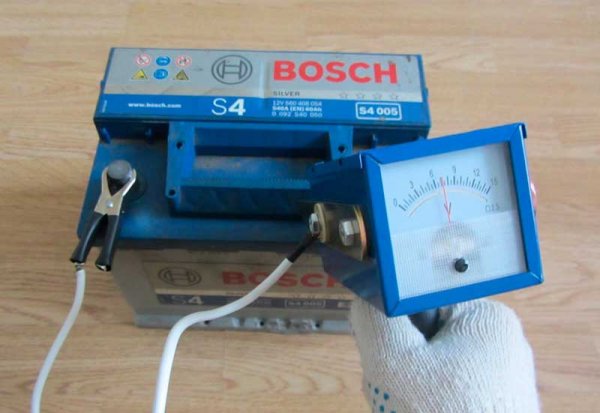
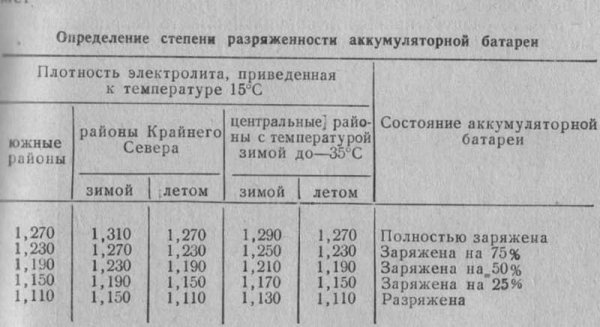
In the cold season, many car owners are faced with additional troubles to maintain the constant "life activity" of their car, and in severe frosts, the problem of what to do if the electrolyte in the battery is frozen sounds very relevant.
In frosty conditions - the working fluid of any battery, falls many times faster than at positive temperatures. Spending the night in a parking lot at temperatures below -30º can lead to the loss of more than half of the battery capacity.
And if we also take into account the fact that in this state the battery needs to “manage” to turn the crankshaft, overcoming the resistance of the oil thickened from the cold, it becomes clear that not every battery can do such a feat.
Many people know that there is only one way to restore a frozen car battery - charge it. However, even for such a simple event, there is a specific algorithm:
- First, you need to visually determine the condition of the battery. As noted above, at a negative temperature, the electrolyte density decreases. The fact is that the concentration of sulfuric acid decreases and the amount of water in the working fluid of the battery increases.
Water freezes, causing the battery walls to become bulging due to ice inside the case.
So what to do with a completely frozen battery?
First of all, the battery must be removed and placed at room temperature, without taking any action until the ice inside the battery thaws and the walls return to their normal position.
In such cases, there is a risk of cracks, therefore, when the electrolyte in the battery freezes - usually, for thawing, the battery is placed in a container (basin, large saucepan). Otherwise, acid may accidentally get on the flooring in the house and cause damage.
Important! The possibility of electrolyte loss must be taken carefully - a liquid that can be mistaken for ordinary condensate upon a cursory examination will actually be an acid that has penetrated through the cracks in the walls. Therefore, it is safer to carry out work on resuscitation of the battery with rubber gloves to avoid injury to the skin.
Battery rating
On the body of many modern car batteries there is a so-called eye-indicator, which changes color depending on the degree of charge of the battery. Eg - working condition The battery corresponds to the green color of the indicator. 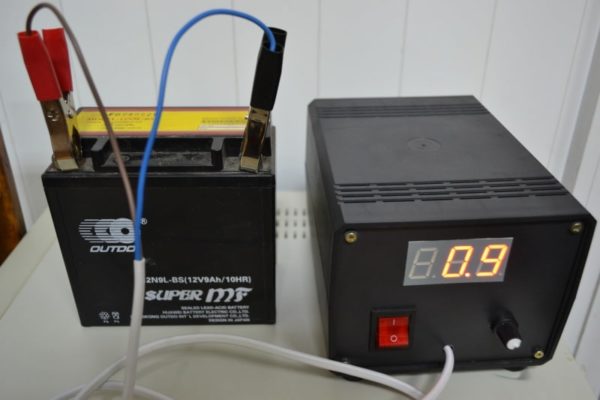
The method is quite primitive, and will not reflect the true state, and even more so - will not tell about exact values discharge. The only use of such indicators is the visualization of the presence of the proper level of electrolyte in the battery. As the moisture evaporates, the eye will turn red.
With a hydrometer
A hydrometer is a device that allows you to measure the density of the electrolyte in cases where the battery is frozen. However, you can use it only if the design of the battery allows you to have access to a separate jar of liquid. 1.27 g/cm³ is the density value of a fully charged battery.
Density drop one hundredth will say that the device has lost 6-7% of its original charge. Having carried out simple arithmetic calculations, one can easily calculate the minimum electrolyte density values at which the battery will be completely discharged. This threshold will be 1.11-1.15 g/cm³. 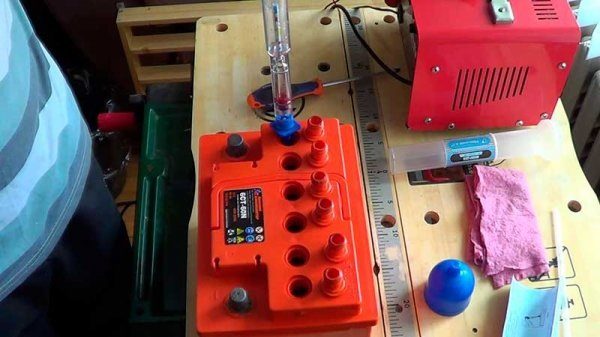
Diagnostics using a hydrometer, in cases where the battery freezes, is not always possible. The fact is that most batteries are maintenance-free, which means they do not have access to electrolyte banks. 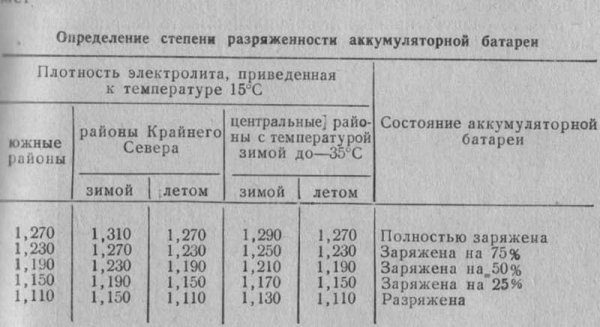
With a voltmeter
The versatility of the method lies in the fact that the device is able to show both the voltage of the battery as a whole and each cell individually, and thus indicate the problem area. 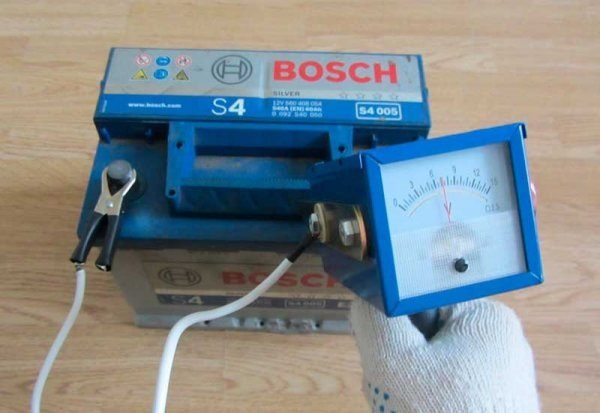
Important! When connecting such a device directly to the battery, the voltmeter should show a voltage 5-6% higher than the nominal voltage (that is, a 12V battery should give a voltage of 12.6-12.8 V when measured).
This is the difference from the voltage of current consumers, where the diagnosed voltage must coincide with the declared voltage during measurements. For example, a twelve-volt light bulb should give a value of exactly 12 V.
It should be noted that during visual inspection it is necessary to pay attention to the transparency of the electrolyte. A cloudy working fluid will tell the owner that the plates inside the battery have been destroyed and it no longer makes sense to charge or repair it.
An example of how people warm up a frozen battery, video.
- After the battery has been warmed up at home, and the owner has determined the degree of battery discharge, it is necessary to connect the battery to the charger. Even a beginner can handle such a device, but it is worth noting a couple of nuances:
- The charge current should be no higher than 10% of the nominal capacity of the battery, otherwise the owner risks reducing the battery life during the charge process. In other words, the optimal current for charging a battery with a capacity of 80 A / h (ampere-hour) will be a value of 8 A.
- Before turning on Charger to the network, it is necessary to connect its terminals to the battery terminals in accordance with the polarity.
Charging the battery, as a rule, occurs within a day.
Conclusion
The measures for "resuscitation" of a frozen battery, mentioned above, are simple and will not bring great difficulties to an experienced car owner. However, during the winter, you don’t have to wonder at all - “what will happen if the battery freezes?”.
It is enough just to carry out prevention and properly charge the battery before the onset of cold weather. The point is that even in summer period the battery is able to lose its capacity due to short city runs of the car owner. The generator does not have time to charge the battery during short trips, as a result of which even a small negative temperature can negatively affect the battery.




